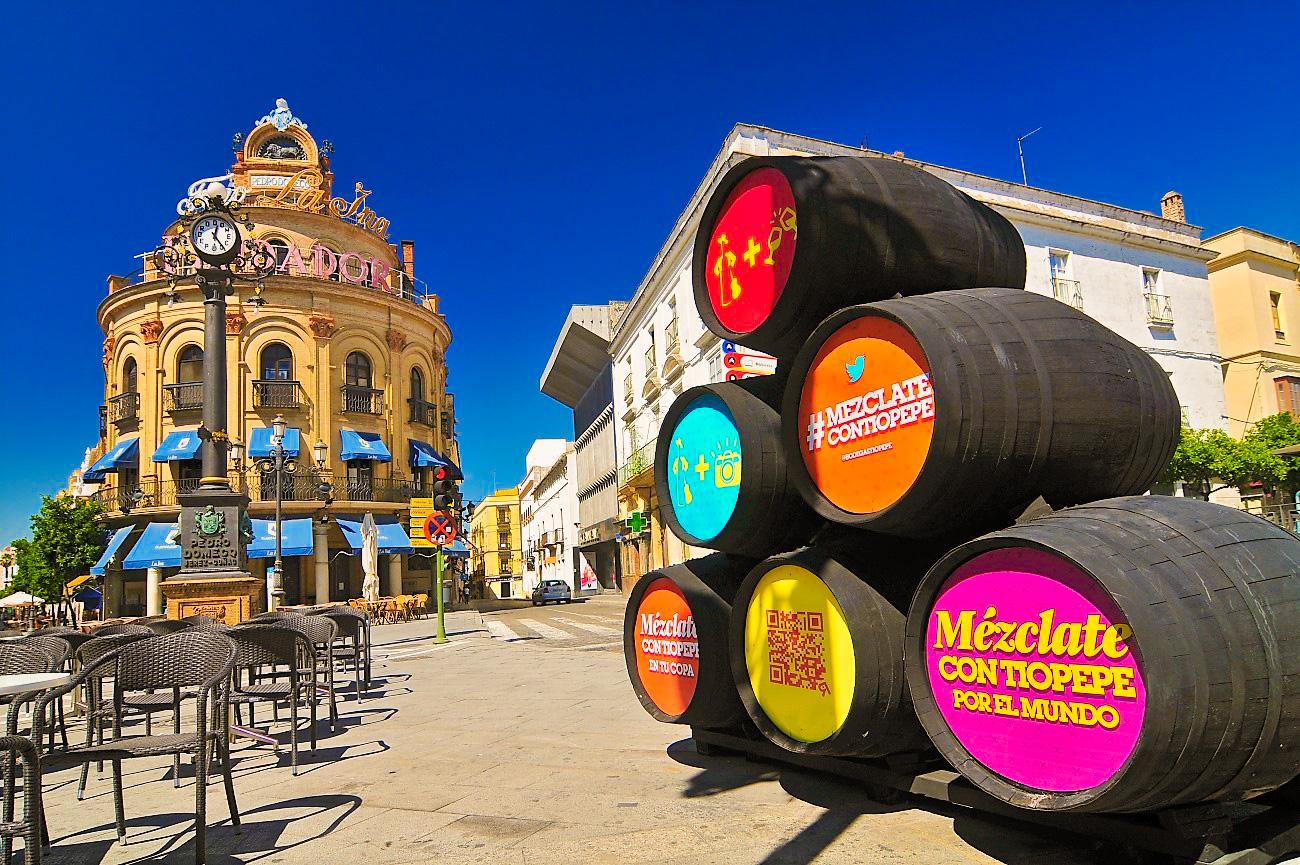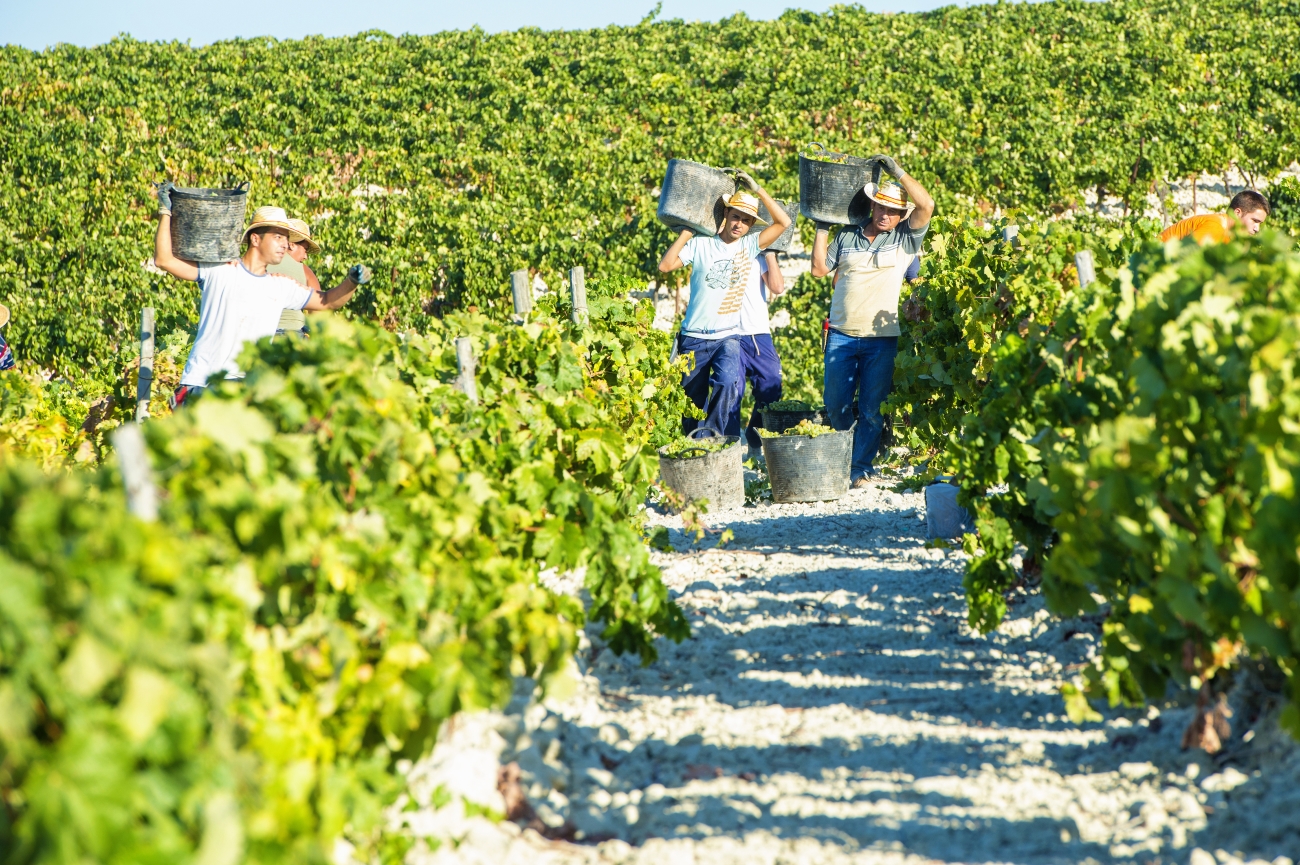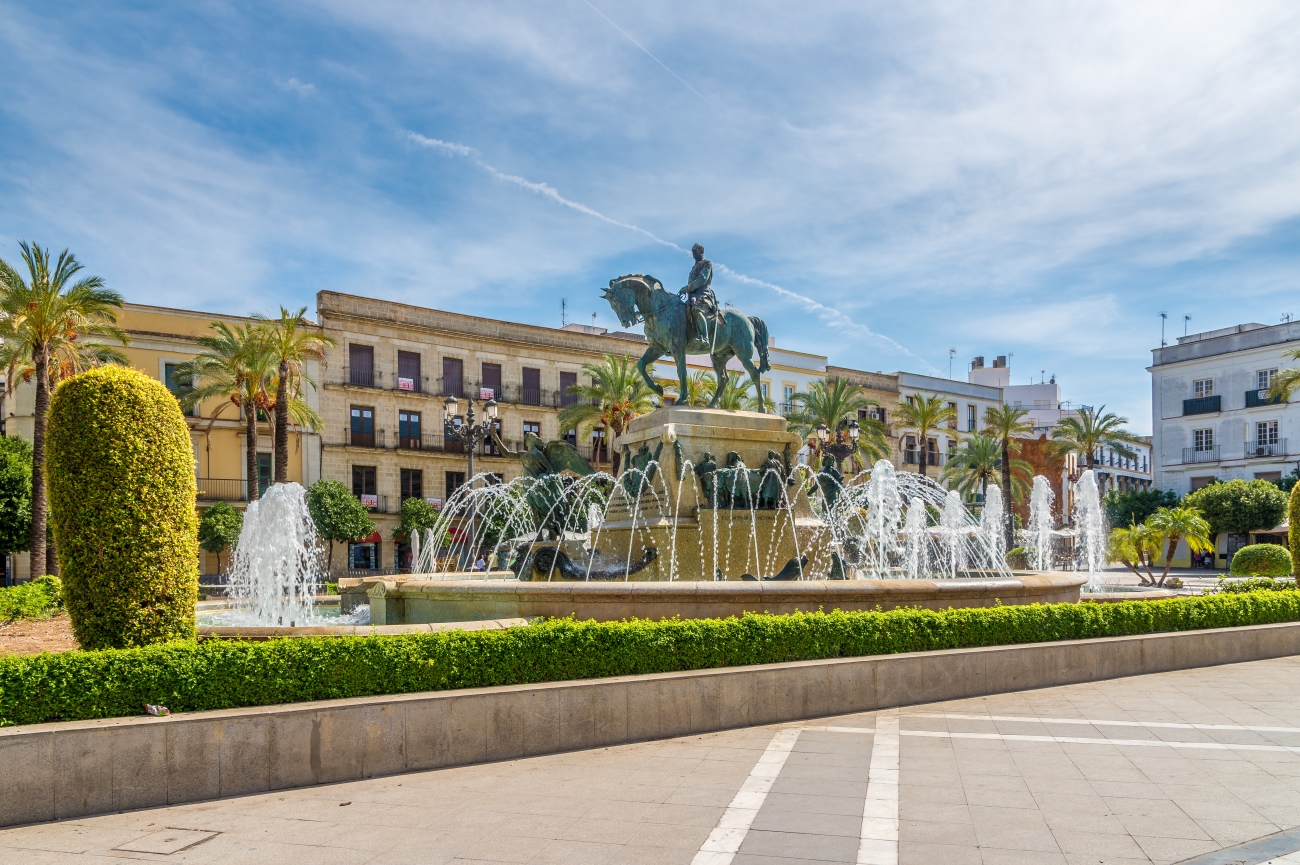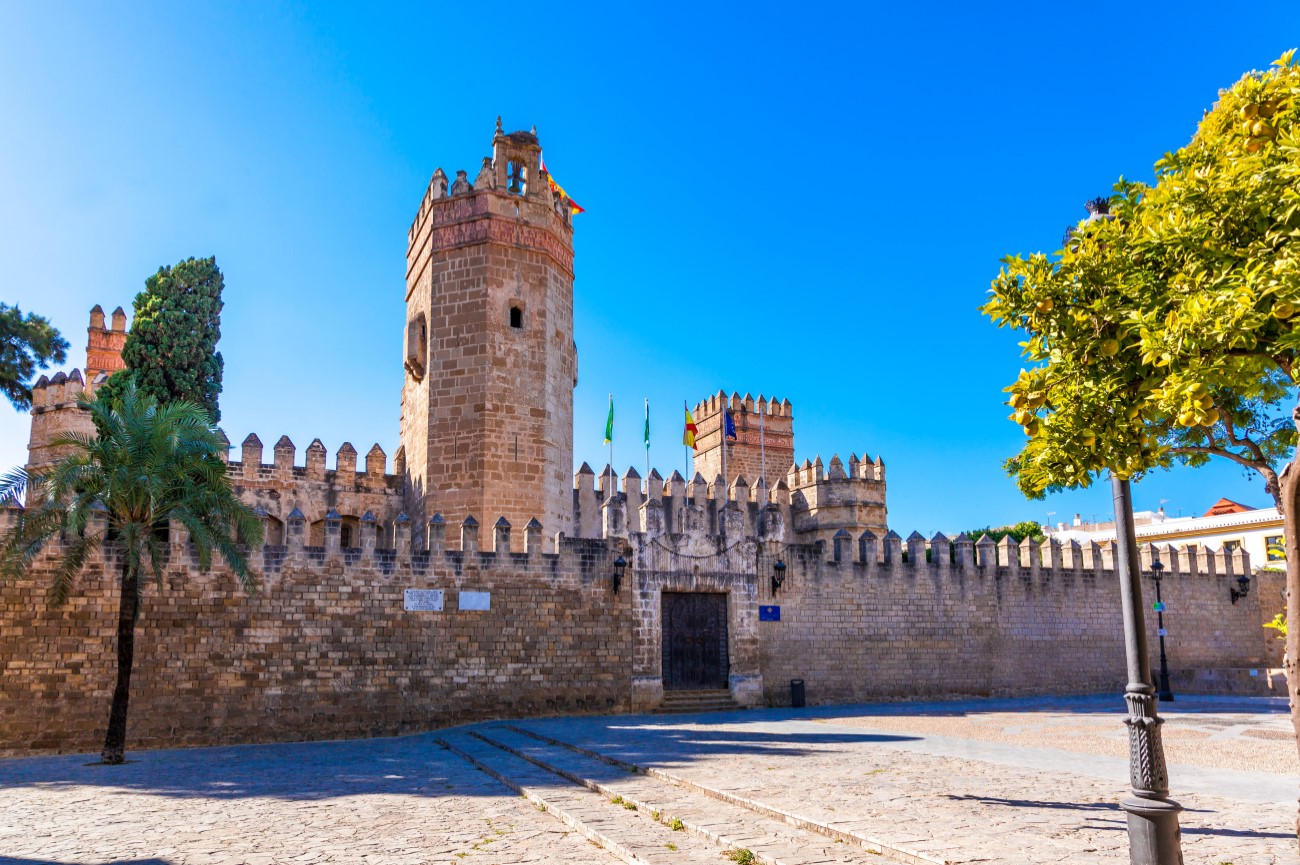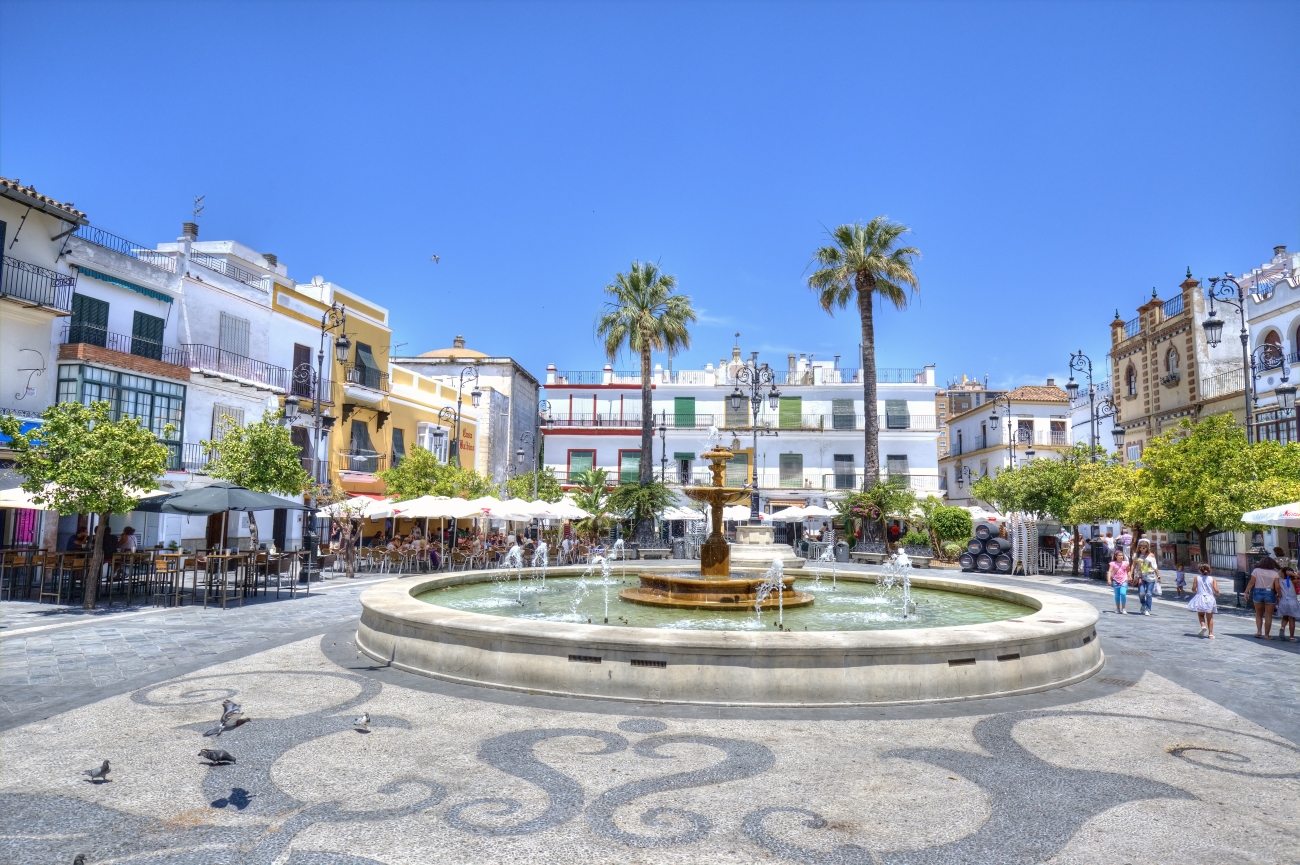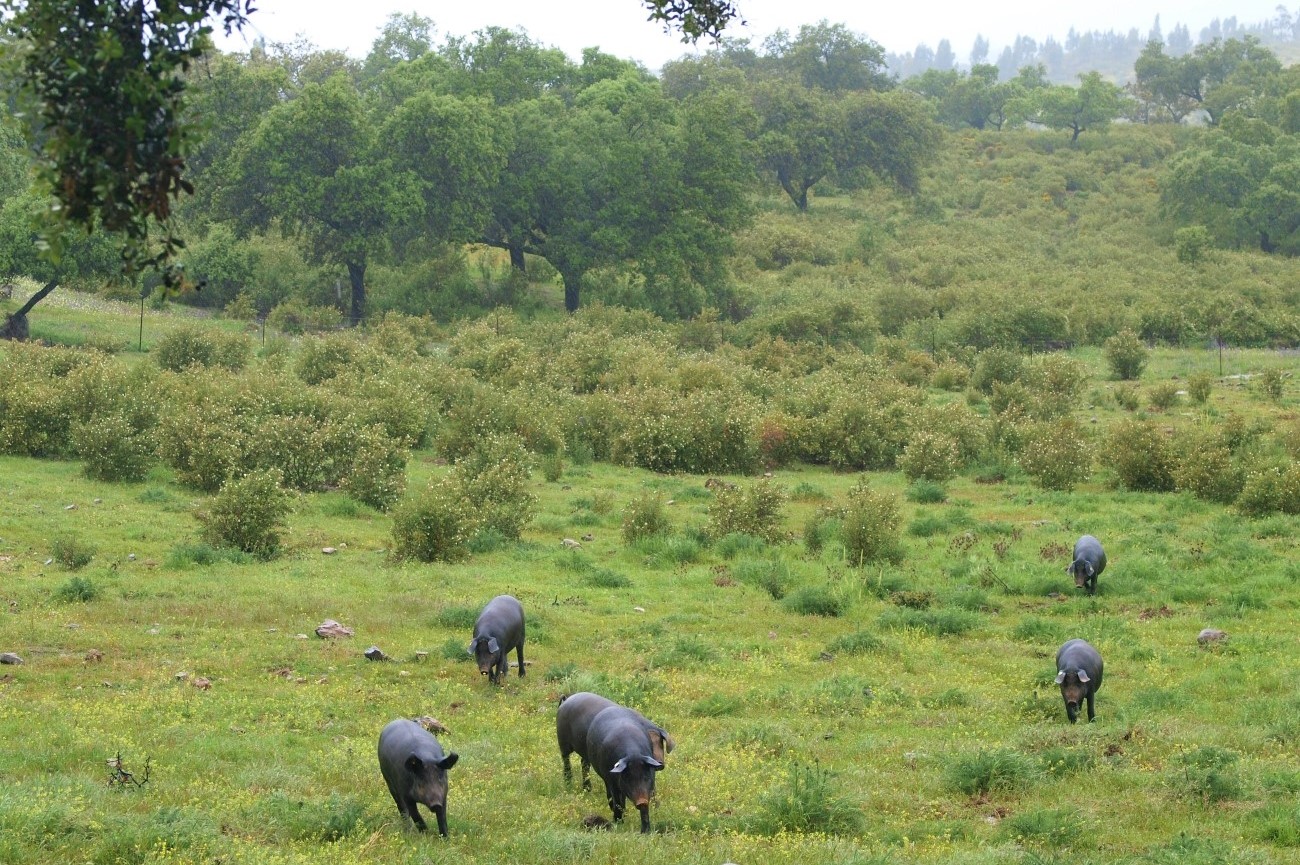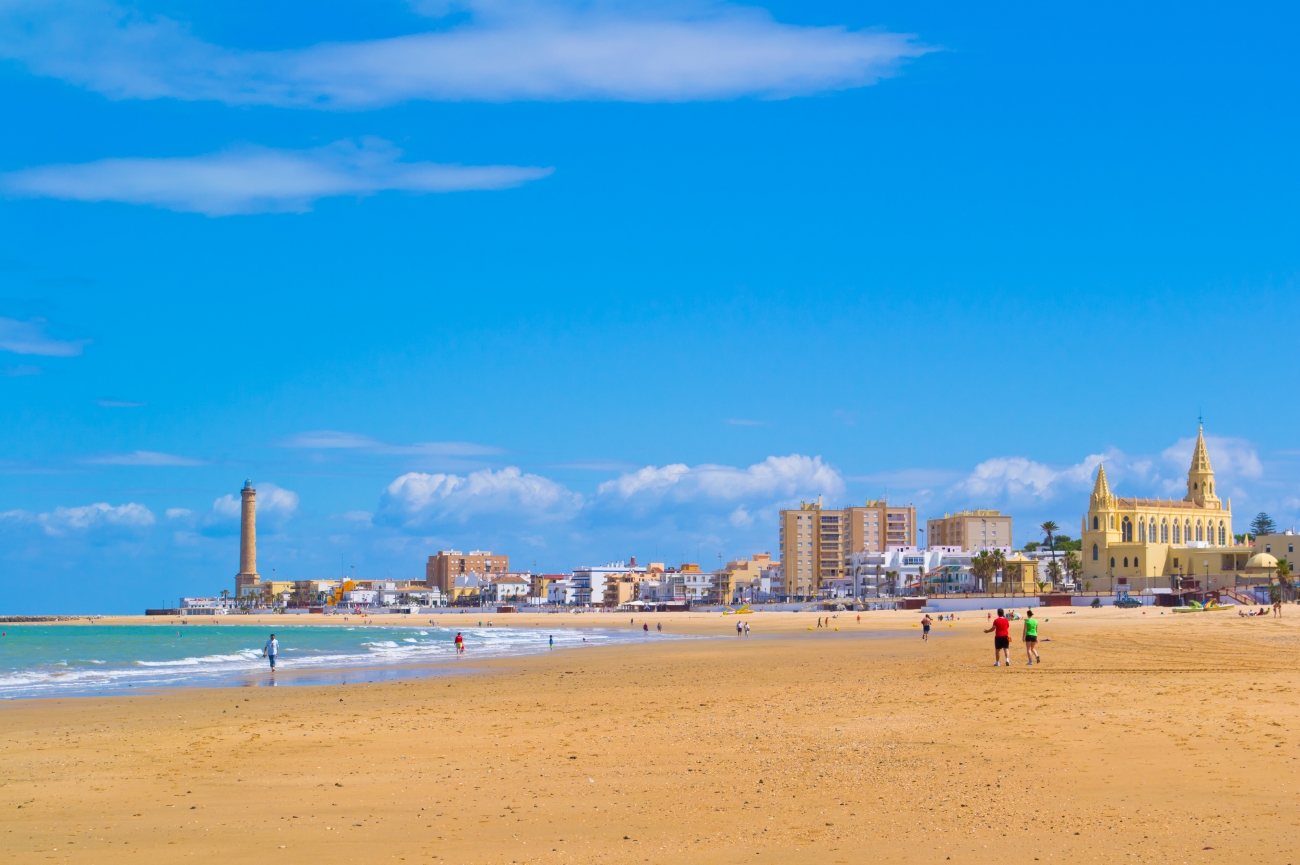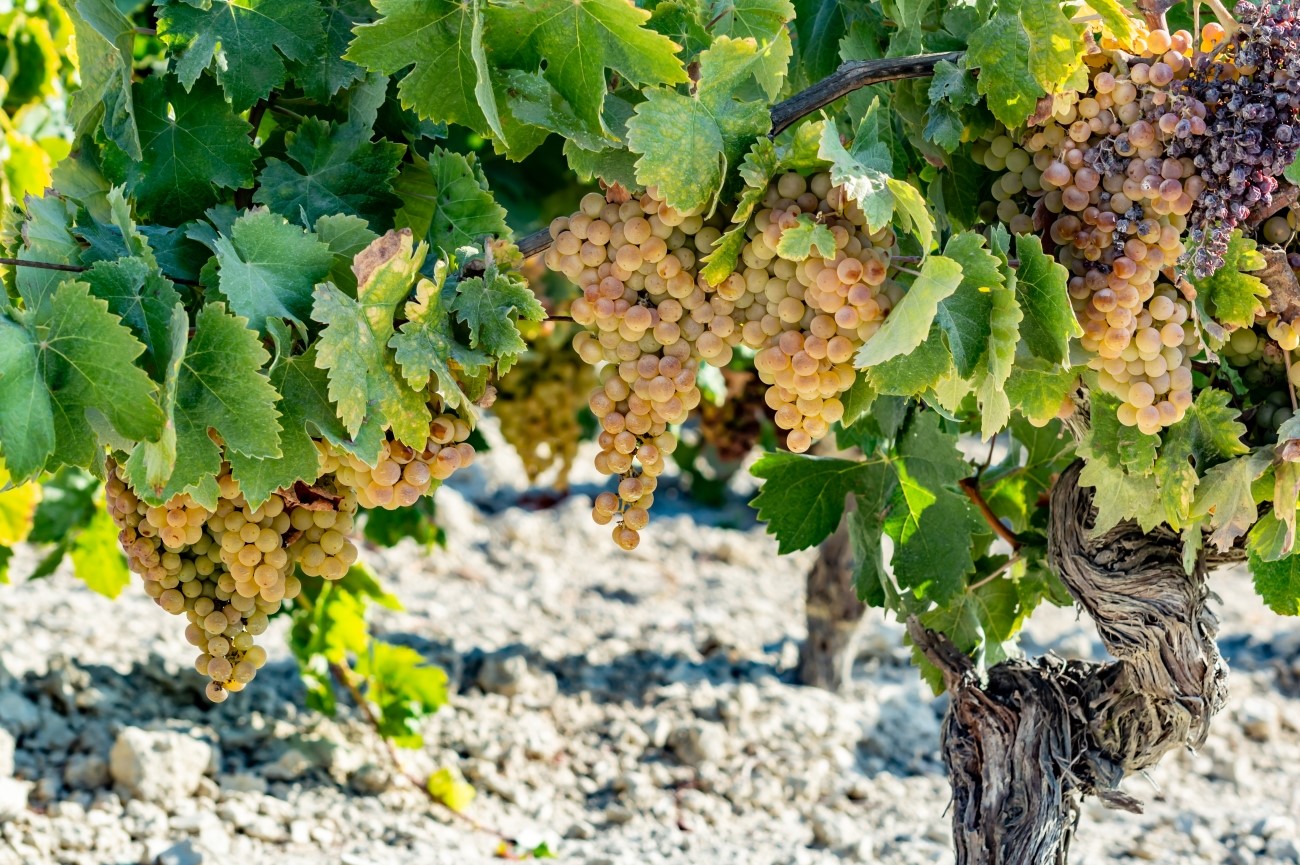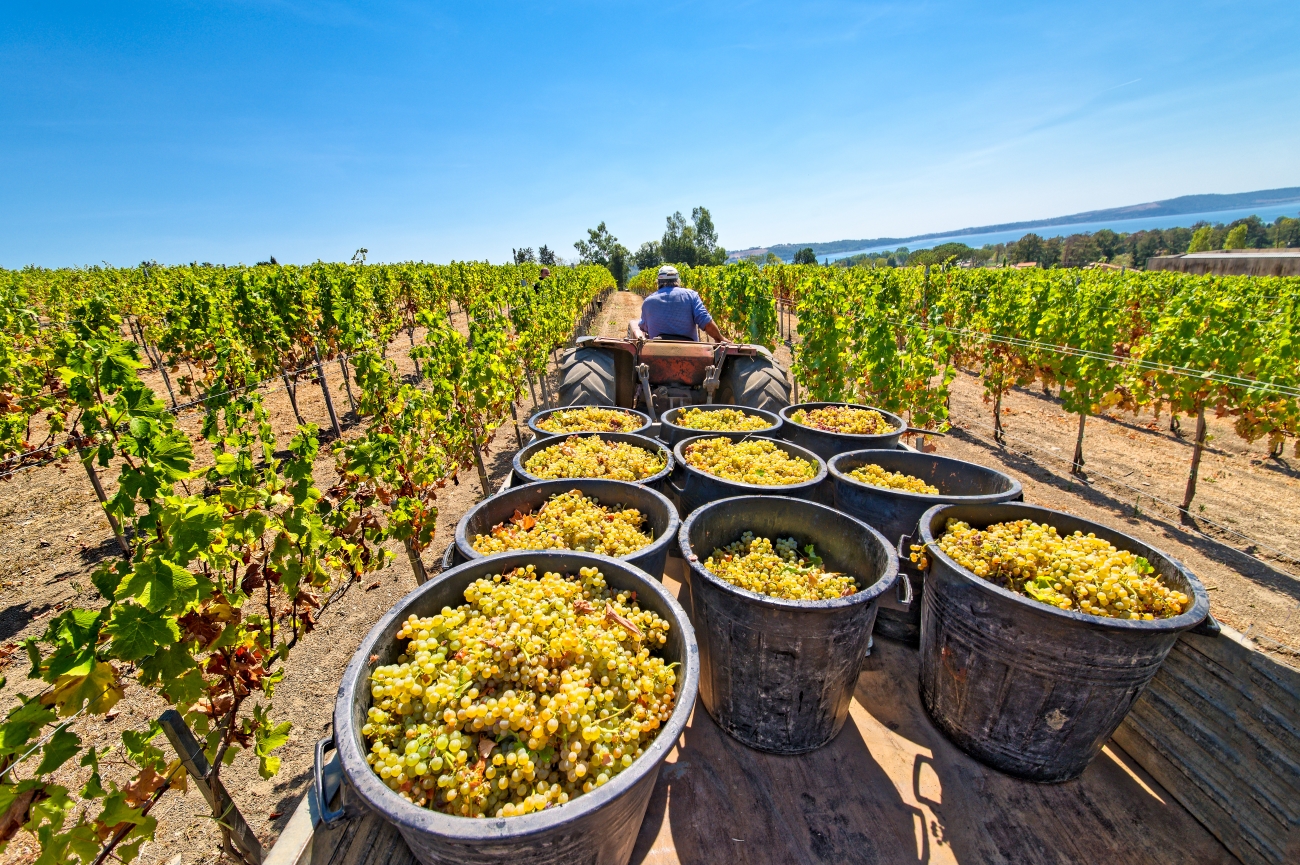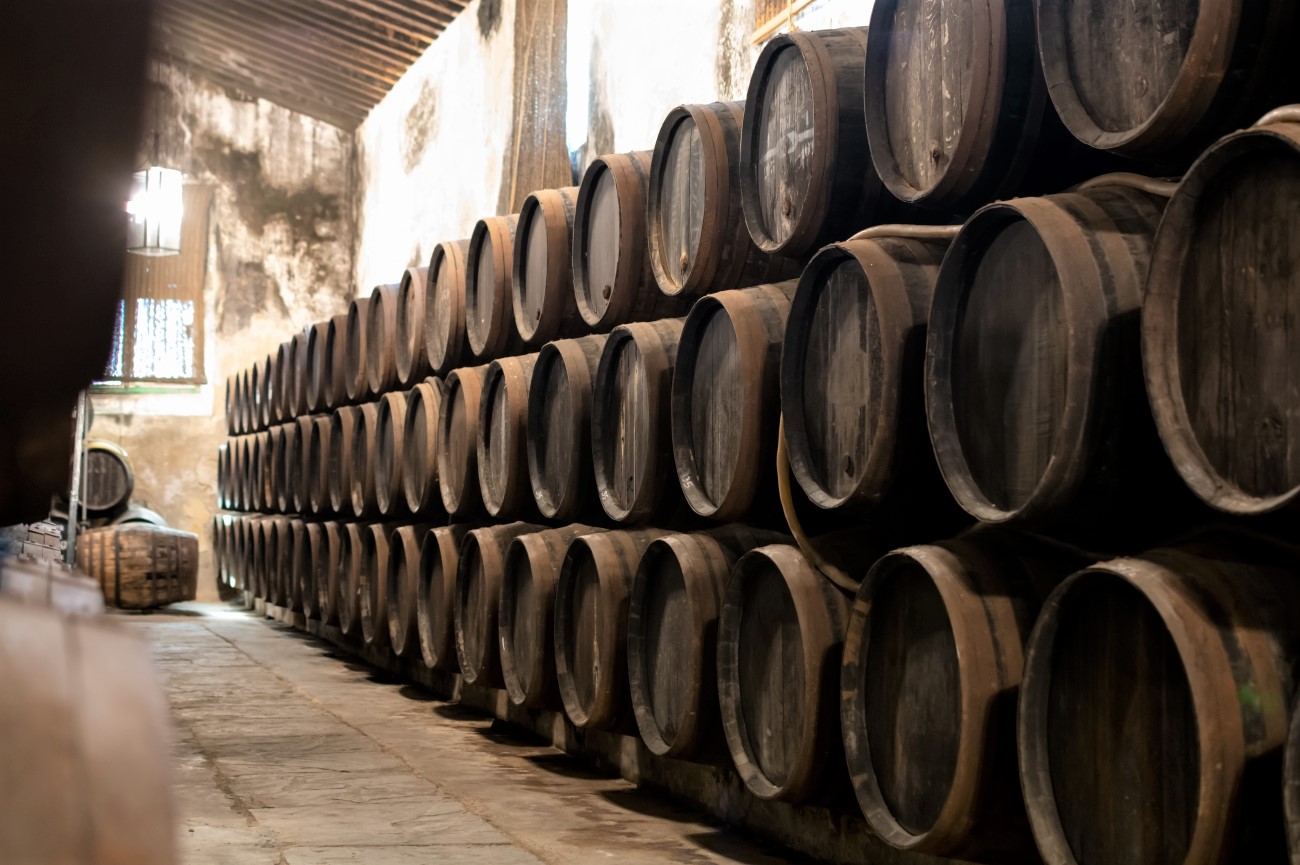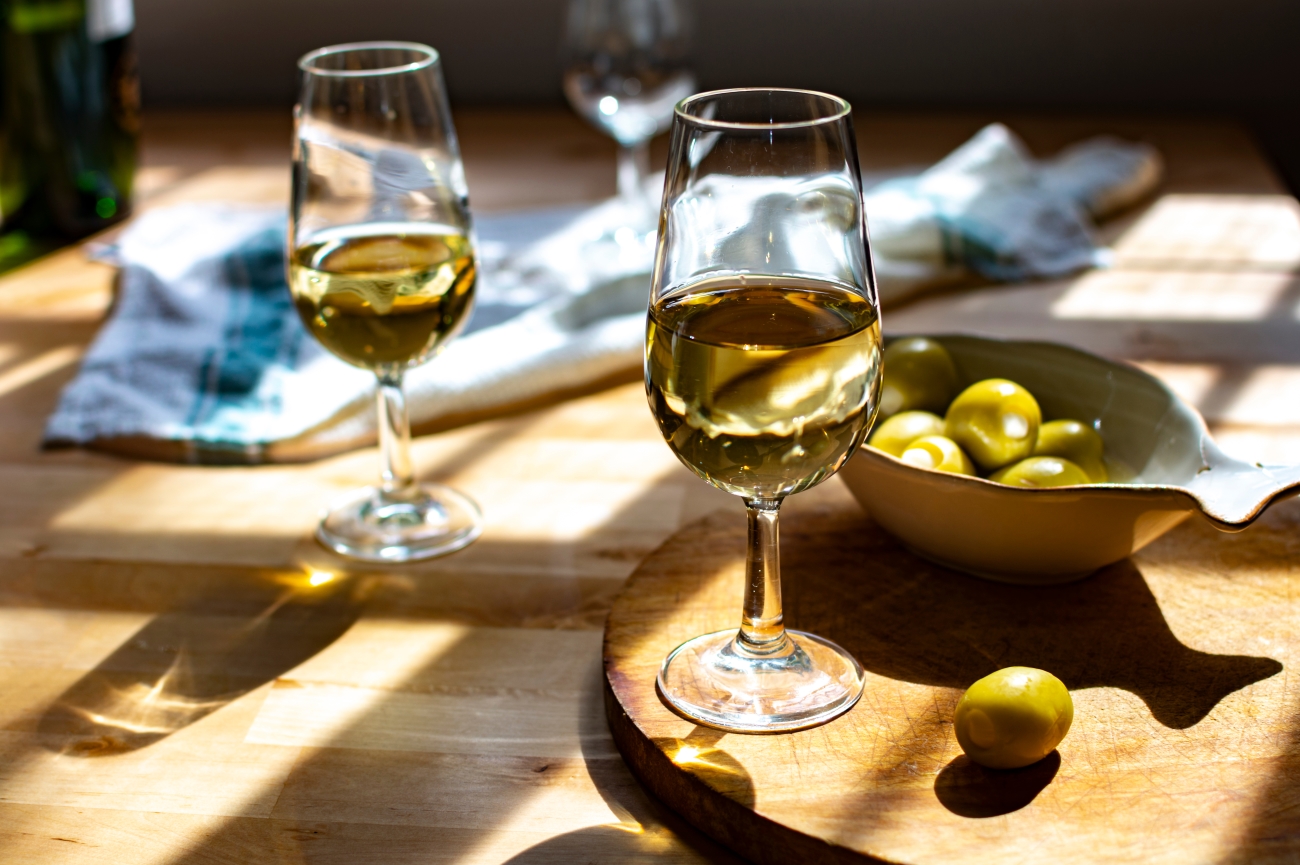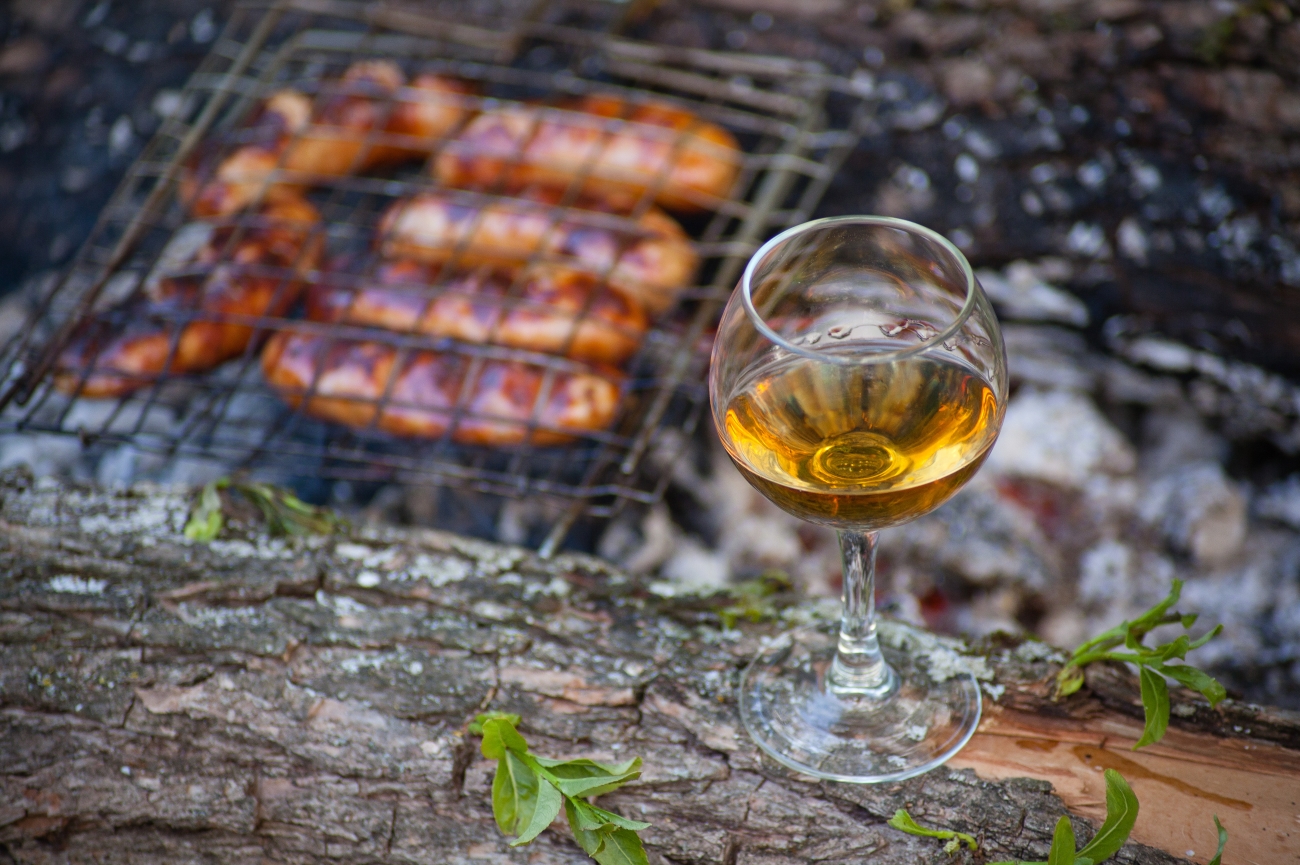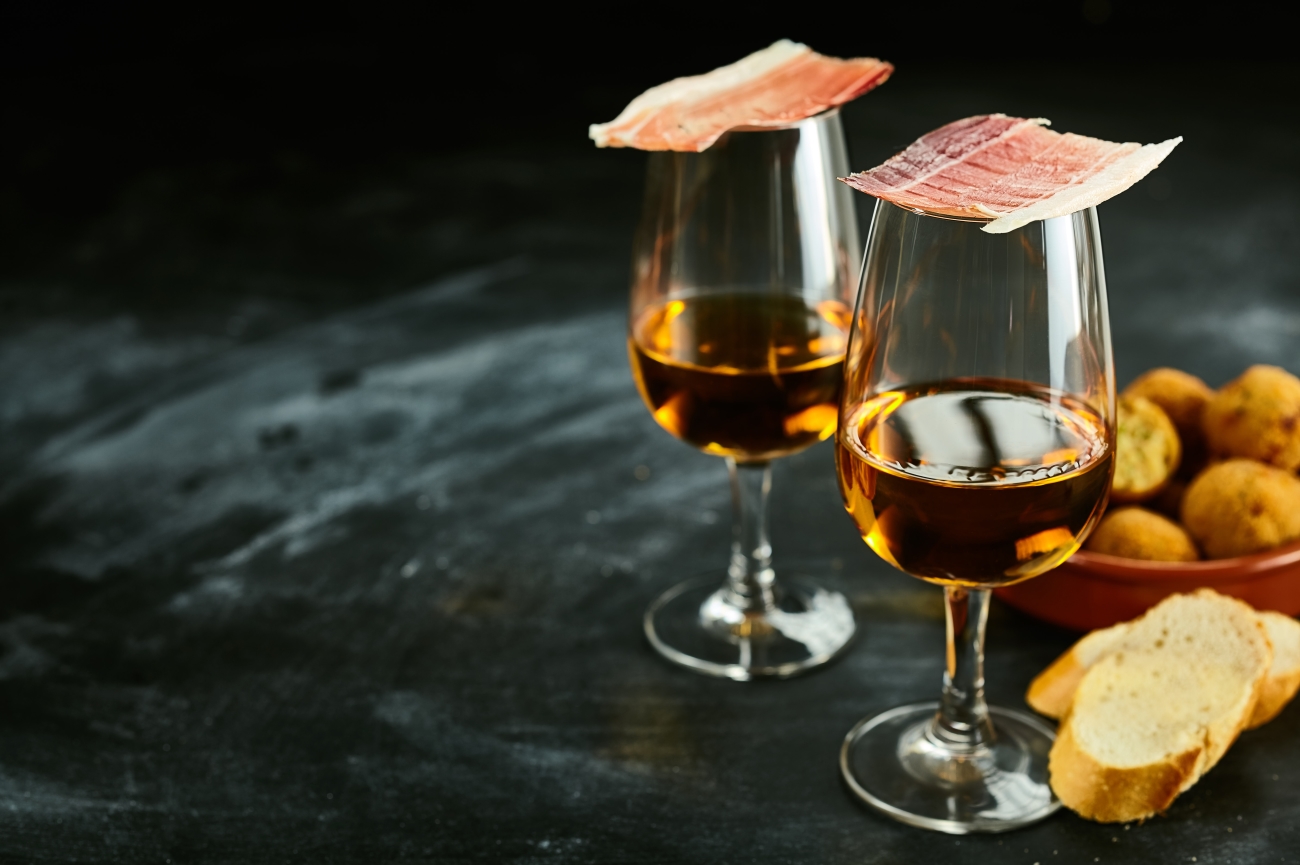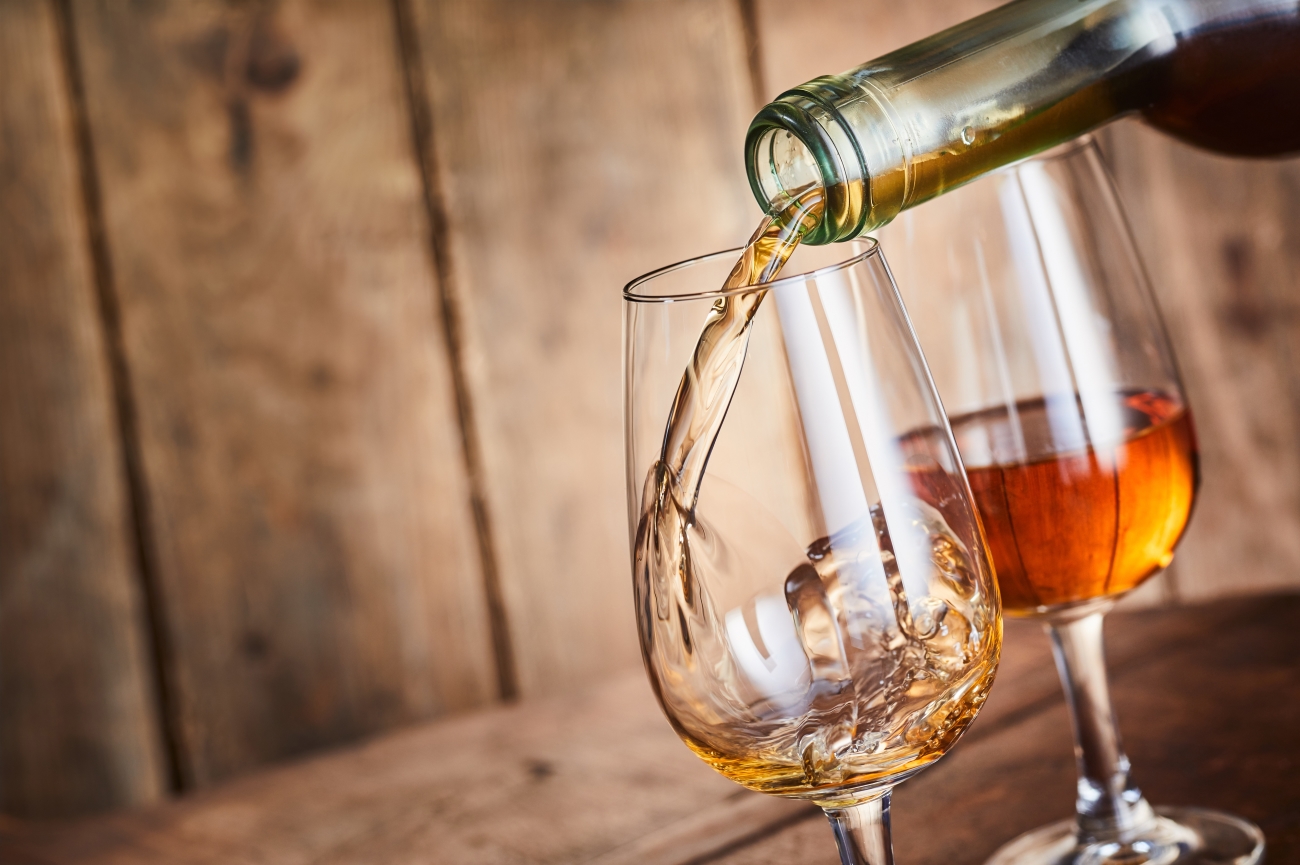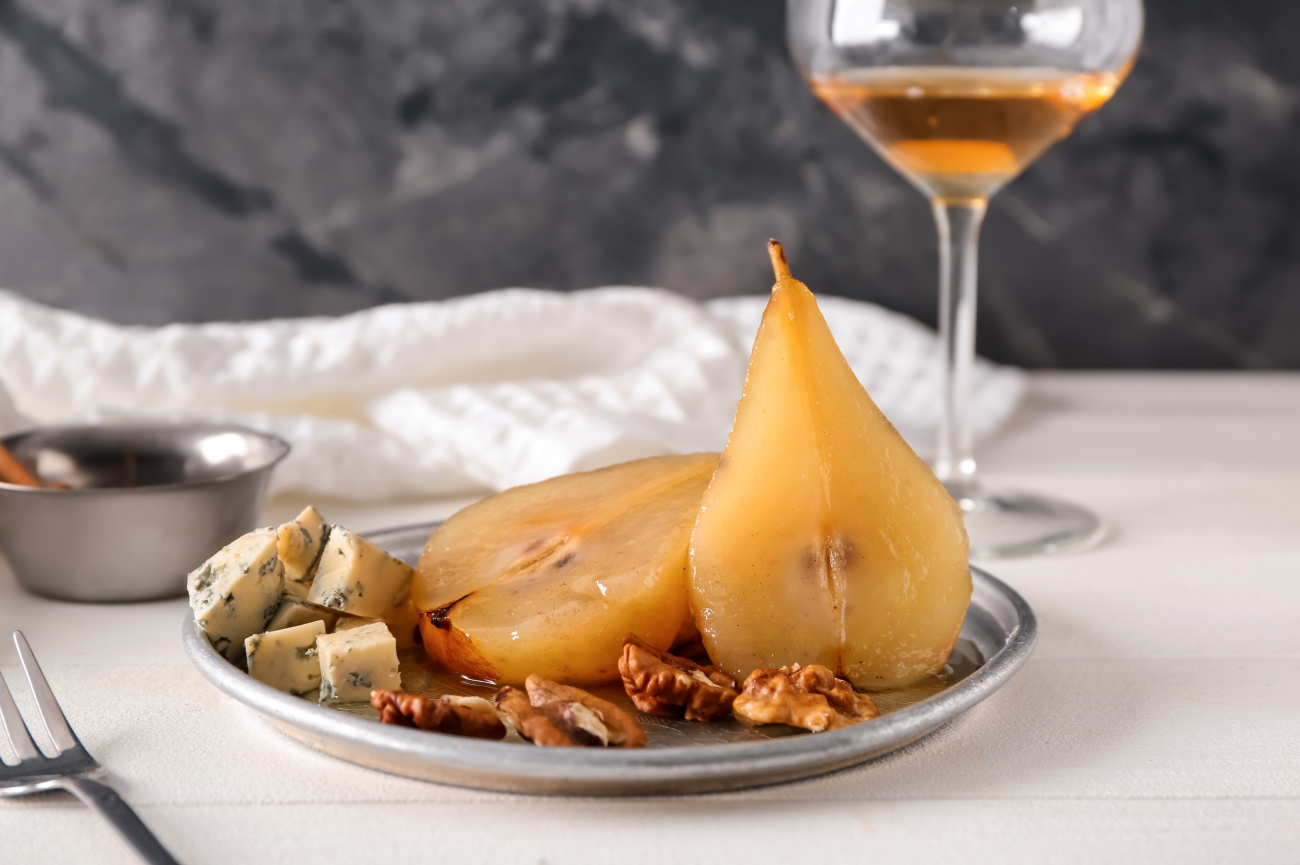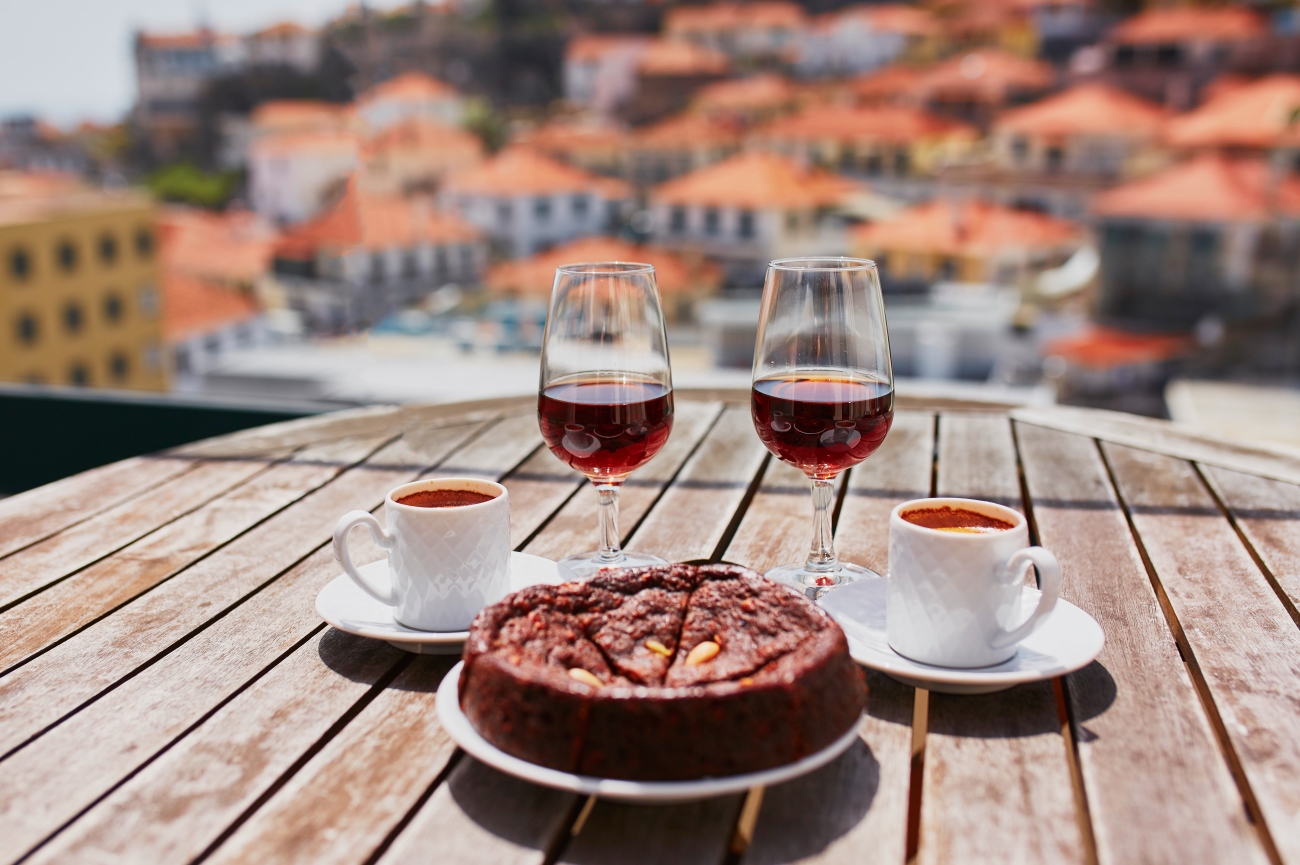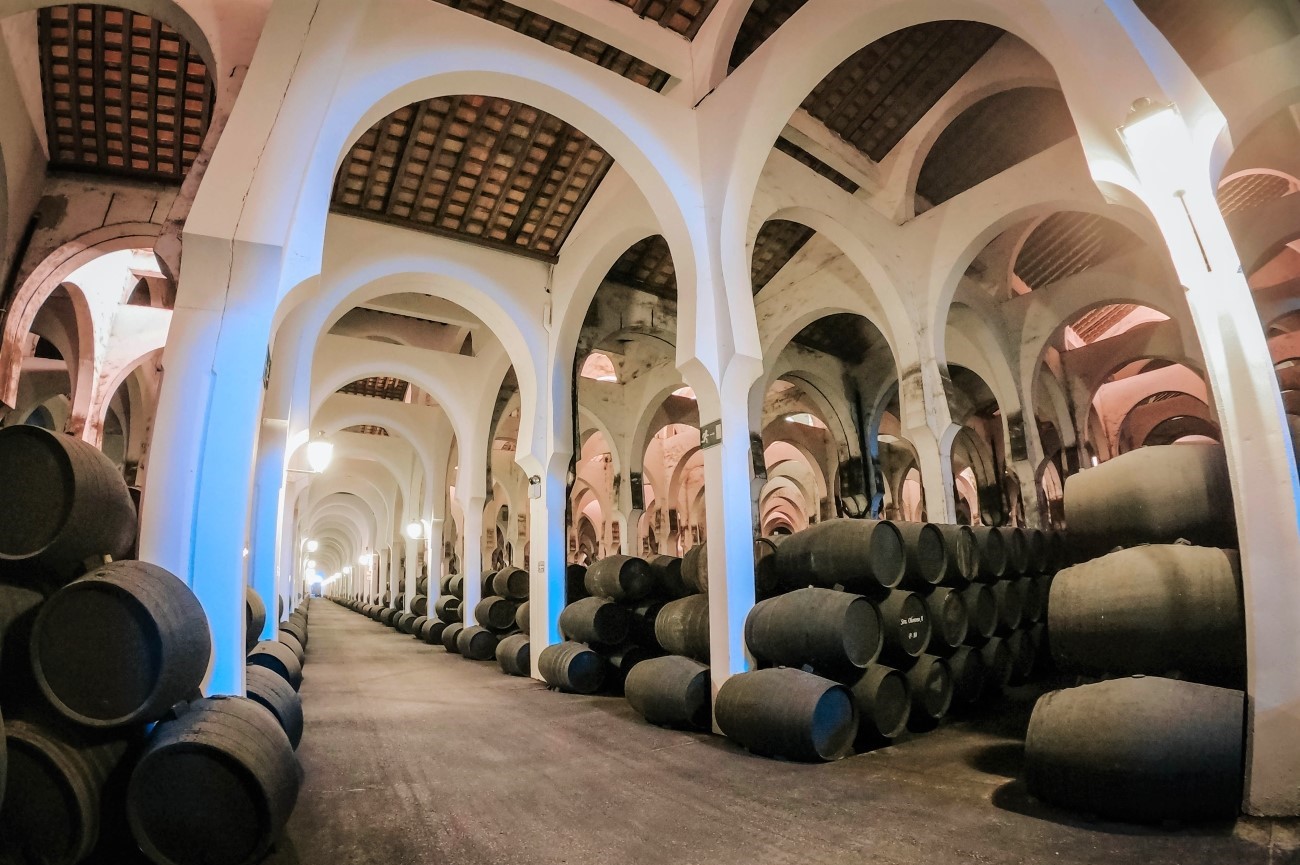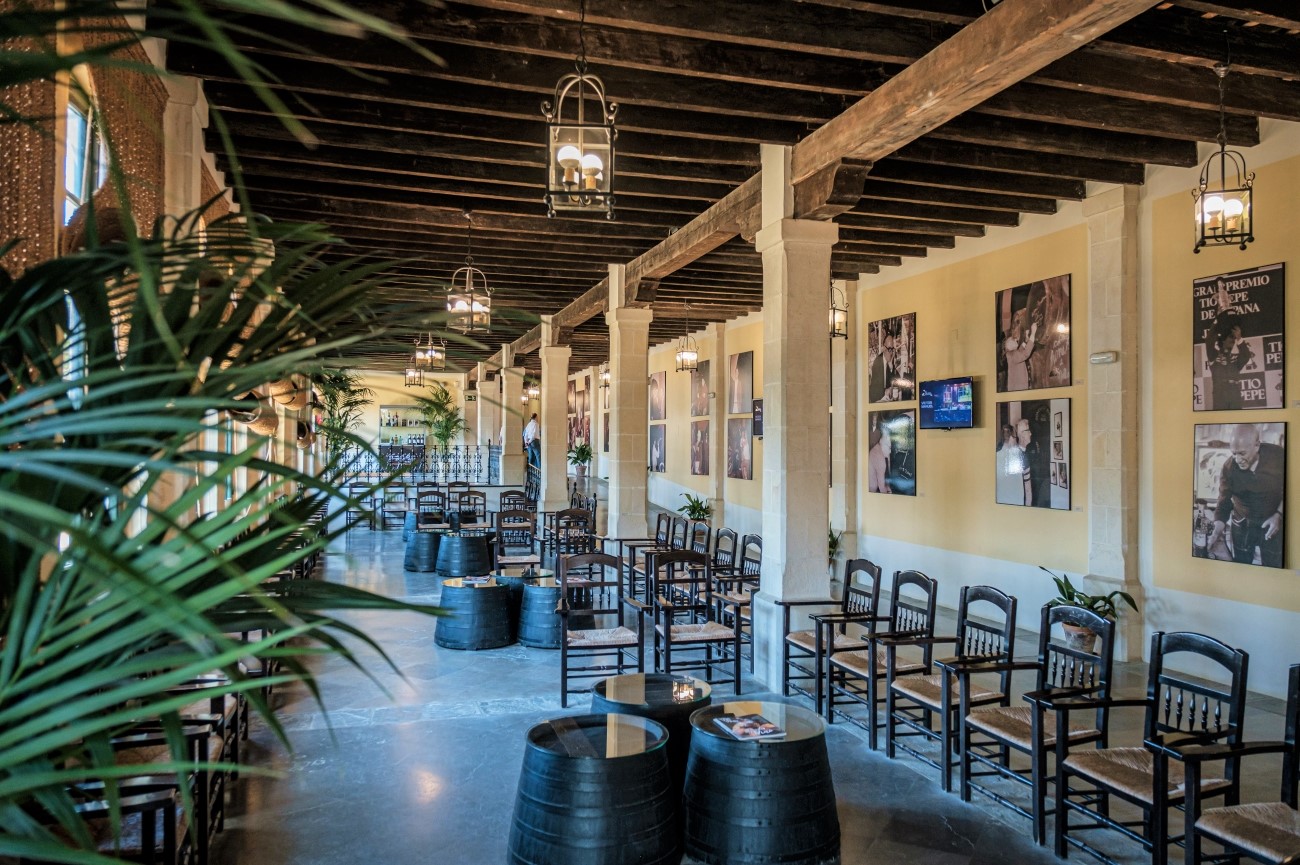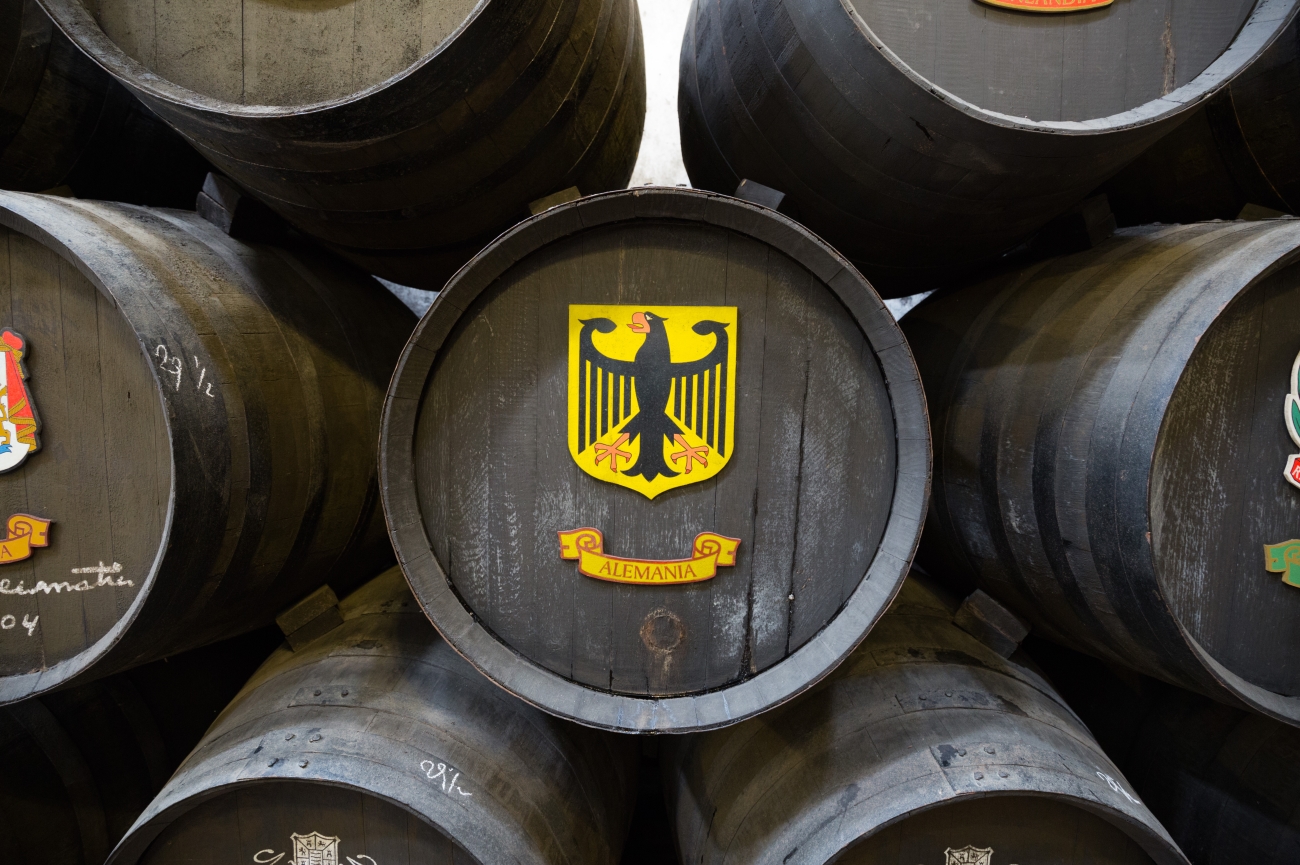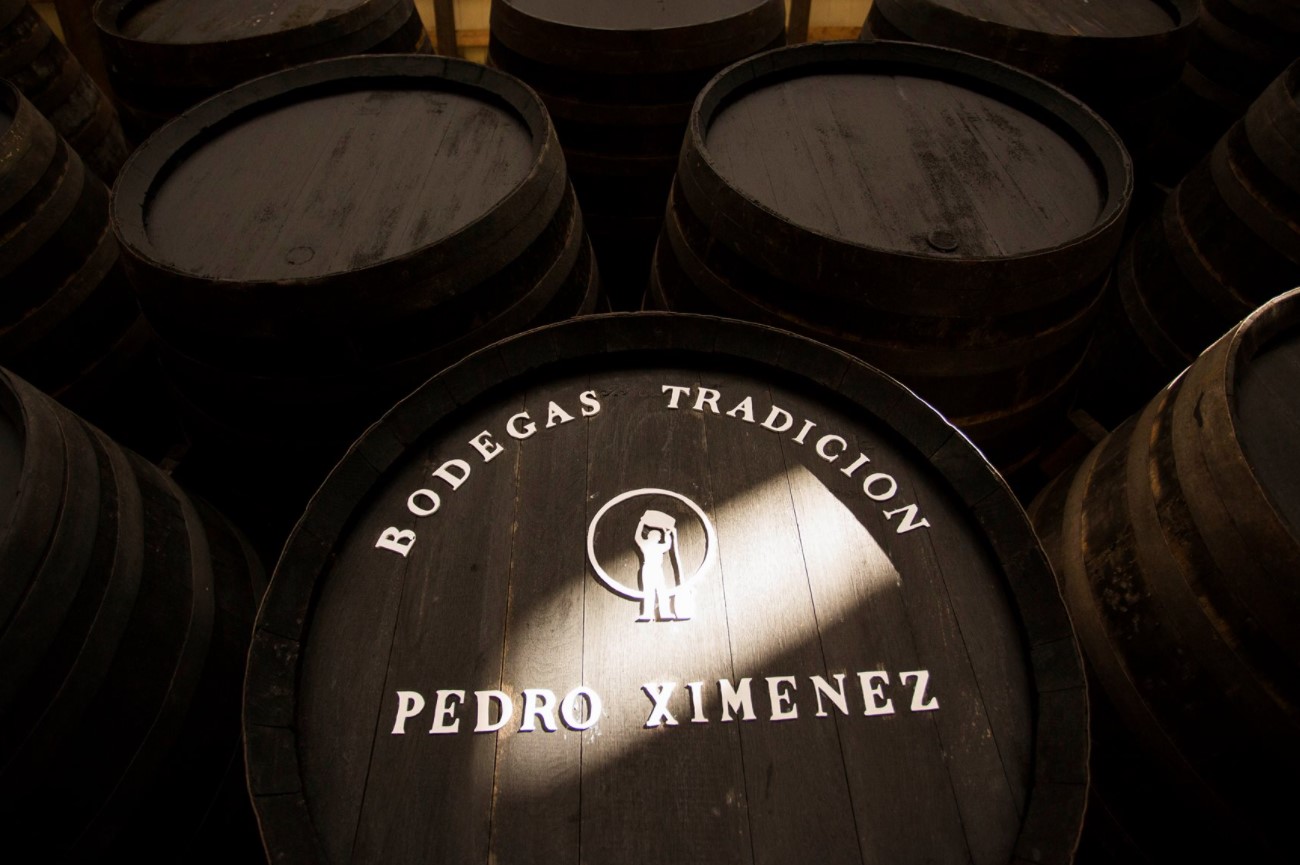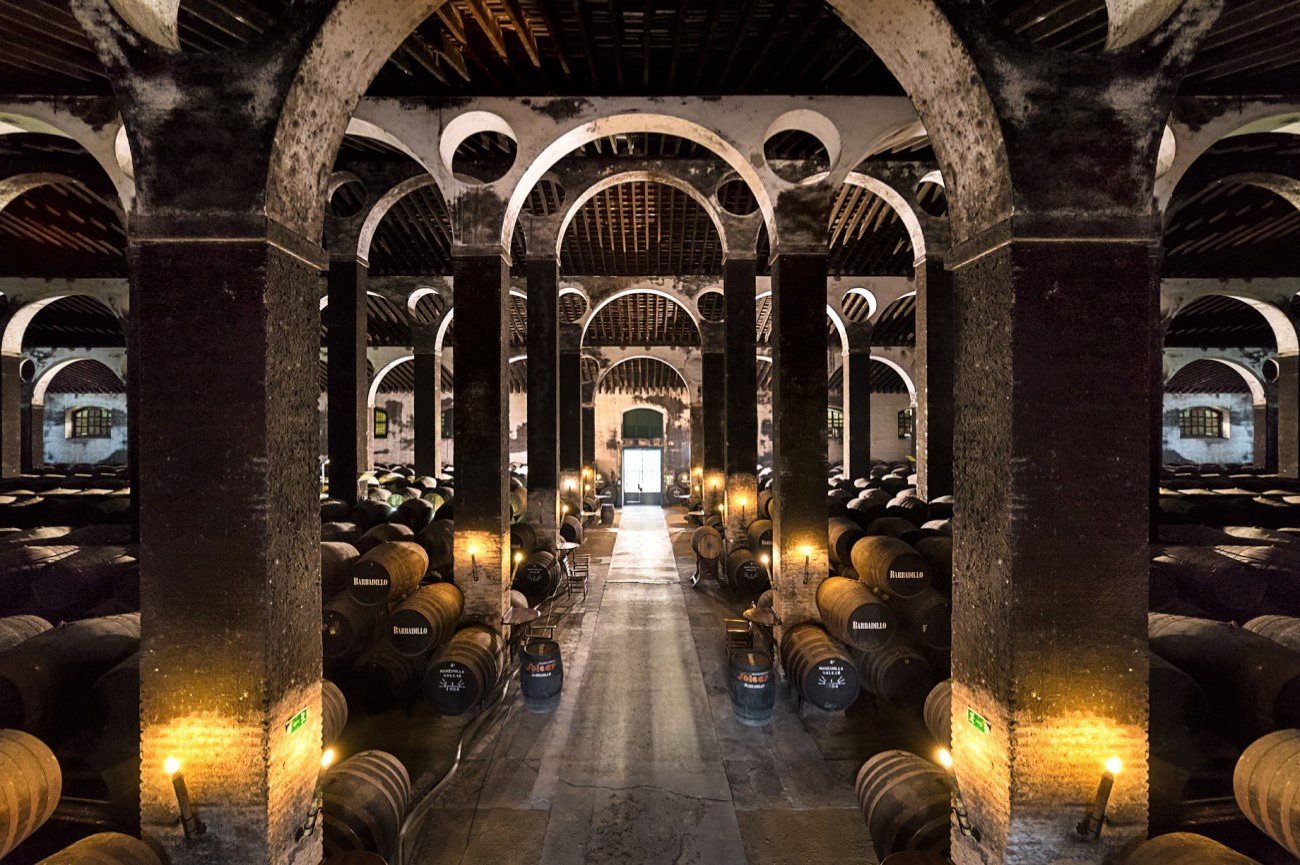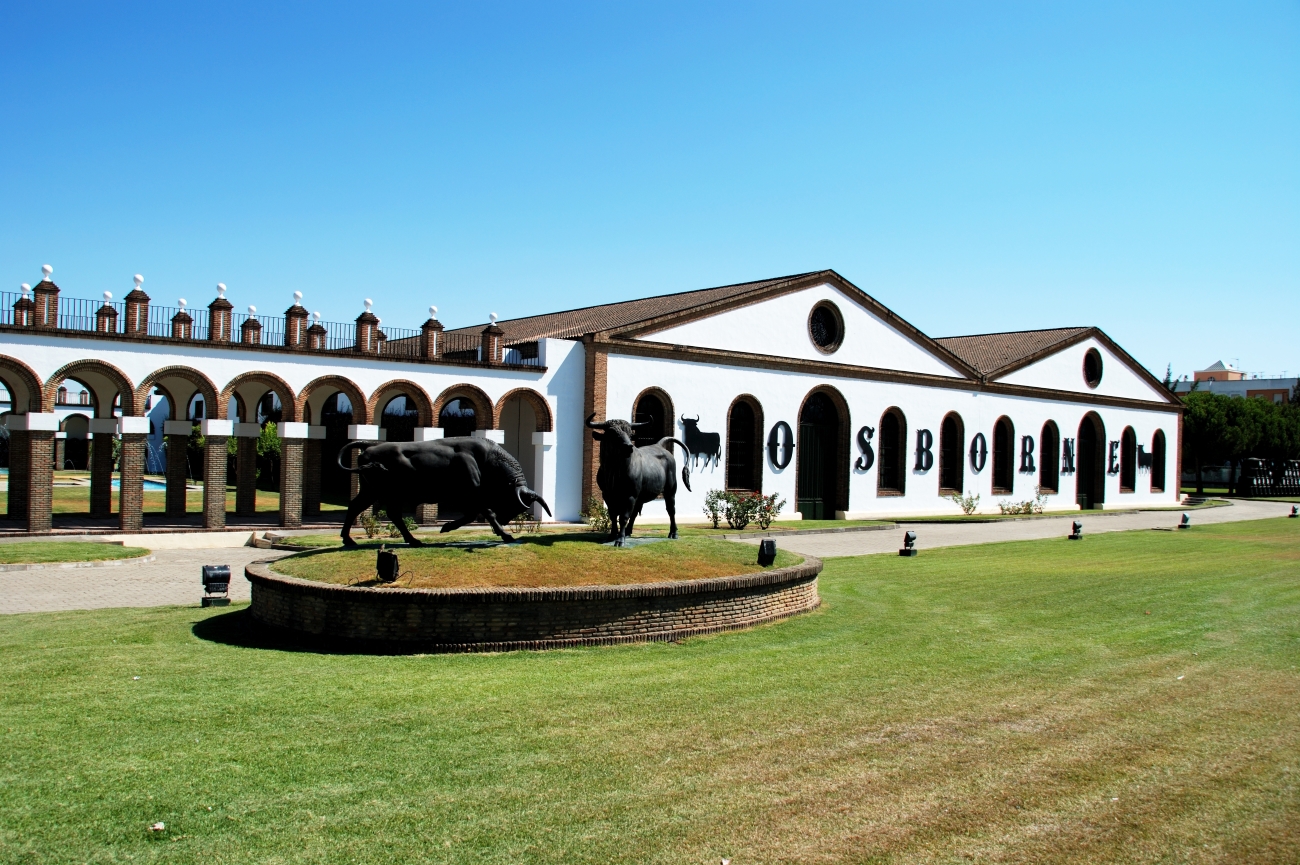Sherry Route Guide
Sherry is a fortified wine produced in the southwest of Andalucia. Jerez de la Frontera, Sanlúcar de Barrameda and El Puerto de Santa María, are the three towns that make up the infamous sherry triangle. It’s here you’ll find the region’s beloved vineyards, and where you can spend days on end sampling sherry and tapas.
If you’re planning a trip to
Andalucia, this sherry route guide will teach you everything you need to
know about this classic Spanish drink, from its origins to the
winemaking process. It also features a list of the best sherry wineries
in the region and the different styles you’ll encounter.
Sherry Origins
It was the Moors that introduced the process of wine distillation to Spain after invading the country in the 8th century. The word "Jerez" comes from the Arab "Sherish" which was the name of the town where sherry wine was first produced.
Centuries later this fortified wine became famous around the world, especially among the British. When conquering Cádiz, in 1587, Sir Francis Drake collected 3,000 barrels in his ship, and the British enjoyed it so much that they began exporting it. They called it sherry since it was easier to pronounce than "Jerez".
Sherry Region
The Sherry region includes three towns in Andalucia: Jerez de la Frontera, El Puerto de Santa María and Sanlúcar de Barrameda. If you draw a line on the map connecting these, you get a triangle, which is why the region is known as the Sherry Triangle.
The cellars here are often called "wine cathedrals" for its remarkable interiors and architecture. That, combined with the proximity to the sea, makes this an ideal route to experience the best of Spanish seafood and wine.
Jerez de la Frontera is the capital of the sherry wine region, and it's where you'll find most of the historic cellars. Some say it's the birthplace of flamenco, and the bars here host many shows throughout the year. It's also known for its Andalusian Horse Show performances held every week at the Royal School of Equestrian Art. To learn more about what to do in the town you can check our Jerez itinerary.
To the south, where the river Guadalete meets the Bay of Cádiz is El Puerto de Santa María. It's part of the Costa de la Luz, a coastal stretch lined with pristine beaches. Historic sites here include the Castle of San Marcos and the Iglesia Mayor Prioral. In between sherry tastings, you can enjoy a swim or try one of the local seafood restaurants like the Michelin-star Aponiente.
Located a few kilometres north from Jerez and facing the Coto Doñana reserve is the last end of the triangle: Sanlúcar de Barrameda. It's famous for producing the Manzanilla sherry, which has a slightly salty taste due to its proximity to the ocean and ageing process. You could spend the morning touring the local wineries and then go for a hike at the Coto Doñana reserve. If you visit in August, you might catch the annual beach horse racing.
Other areas that belong to the Sherry Denomination of Origin include Trebujena and Chipiona. Trebujena is a small town near the Guadalquivir river dedicated to sherry production and fishing (mostly shrimp and eel). It was also one of the locations for the film "The Empire of the Sun" directed by Steven Spielberg, and you can still see some of the movie’s sets and props today.

Chipiona, on the other hand, is renowned for its beaches and moscatel. When visiting, look for the despachos de vino, traditional wine shops where you can buy a variety of sherry wines, stored in terracotta jars.
How Is Sherry Made
Most sherry is made with palomino white grapes, but moscatel and pedro ximénez grapes are also used in some regions for sweet sherries. The grapes are harvested in early September and then crushed at the nearby vineyards. After that, the must goes into steel tanks for the first fermentation (sobretable). Once the fermentation is over, they add in a grape brandy known as destilado, which makes sherry a fortified wine.
At this stage, sherry producers separate wine into two batches: Finos and Olorosos. Finos age with a layer of live yeast over it called velo de flor (flowered veil), protecting it from oxidation. Oloroso wines, on the other hand, age in direct contact with the air, because the alcohol added during fermentation is too high for the yeast cells to remain alive.
Both wines go through an ageing system called the solera y criadera, designed centuries ago to maintain the same wine quality year after year. During this process, the wine moves between rows of oak barrels. The bottom row is called solera, and the others are the criaderas.
Usually, there are around three or four criaderas in a bodega, each filled with wine from several ages. The first criadera contains the youngest wine, and that continues down to the solera row, which has the oldest wine. When the sherry is ready to bottle, it gets extracted from the solera row, and the wine from the row above replaces the amount taken. That means no barrel is ever empty and there's always remains of the previous year's wine.
Sherry Styles
In Andalucia, locals usually order sherry by its style. Un fino or un amontillado is what you'll hear most often, but there are ten different kinds of sherry, ranging from light and dry to dark and sweet.
The ancient ageing process combined with the diverse fortification methods and the micro climates within each town is what creates the different sherries. Most dry sherries use the palomino grape variety, but the sweet ones tend to use moscatel or the pedro ximénez grapes. Below is a list of the most famous sherry styles and its ideal food pairings.
Dry Sherry Wine
Dry sherries are good to drink as an apéritif and should be served chilled. The dryer the wine the cooler the temperature should be. Finos and manzanillas usually spend around five years in the solera system. Amontillados and olorosos spend ten or more years.
Fino
Fino is the driest of sherries. It ages under a natural yeast layer called flor, which helps prevent oxidation and keeps its fresh flavour. Fino sherries have a light body and a low alcohol content between 15-17%. It tends to lose its flavour after it's opened, so it's best to drink it straight away and preferably chilled.
Pairings: Best paired with salty foods such as olives, almonds and Spanish jamón. It also goes well with seafood and sushi.
Manzanilla
Manzanilla is a type of fino made exclusively in the town of Sanlúcar de Barrameda. The ageing processis similar, but the proximity to the sea and the humidity results in a paler wine with salty notes. It should be drunk chilled and within a day or two after opening.
Pairings: Similar to fino, it goes well with olives, almonds, Spanish jamón, fried fish and seafood such as shrimp or raw oysters.
Amontillado
This wine begins as a fino, ageing under the velo de flor first, for around four to six years and later through oxidation. This last stage allows the wine to develop more nutty flavours such as almonds and hazelnuts. It has an amber colour, and it can vary between dry or medium-dry if mixed with a small amount of pedro ximénez grapes. It contains around 16 to 18% alcohol.
Pairings: Amontillados go well with pork and rabbit or bird meats such as chicken, turkey or quail.
Olorosos
This sherry has more of a full body. It ages without the protective yeast and only through oxygen. It has a dark golden colour and notes of dried fruit and spices. Olorosos spend about six to eight years in the solera and contain higher alcohol content (between 18 to 20%).
Pairings: It's the ideal match for grilled red meats, game, aged cheeses and mushrooms.
Palo Cortado
Somewhere between an amontillado and an oloroso. Palo Cortado is a rare kind of sherry since it usually occurs by accident. It starts off as a fino and then develops more like an oloroso, so it's treated that way for its second stage. The result is a dark-coloured wine with a luscious body due to the high levels of glycerin. It contains around 18 to 20% of alcohol. Recently, there have been producers that have tried to recreate this wine artificially through blending.
Pairings: The same food that goes with oloroso or amontillado. Game meats, but also nuts, vegetables and blue cheese.
Sweet Sherry Wine
When speaking about sweet sherry, you'll often hear the name of the grape used, as well as the word "crema". It refers to the blend of dry and sweet sherry. Sweet wines can range from pale cream (sweetened fino) to cream (sweetened oloroso), which is what most British people are used to drinking.
There's also "medium" usually referring to a sweetened amontillado. All these wines contain around 15.5% to 22% alcohol.
Pairings: Sweet sherries go well with desserts, foie gras or mature cheeses such as blue cheese.
Naturally Sweet Sherry Wine
Within the sweet sherry realm, there are two other sherries pedro ximénez and moscatel, which are named after the grapes used in their production.
Pedro Ximénez
This sweet sherry has a honey-like consistency. It uses about 85% of pedro ximénez grapes. These get dried in the sun for about a week, which helps increase the sugar content. It contains between 15% to 22% alcohol and is considered a dessert wine.
Pairings: It goes well with blue cheese, almond tart or vanilla ice cream.
Moscatel
Like pedro ximénez, moscatel sherries have to use at least 85% of moscatel grapes in their production. The process after that is similar, with the grapes drying in the sun before being pressed and added to the solera.
Pairings: A good match for ice creams and fruit tarts.
Best Sherry Brands and Wineries
One of the best ways to experience sherry is by visiting a cellar, known as a bodega. These offer guided tours as well as tastings, allowing you to sample a variety of sherry styles in one go. Below are some of the best sherry bodegas in the Andalucia region:
Jerez De La Frontera
- Bodegas Fundador: Established in 1730, it's the oldest bodega
in Jerez. Its historic structure, attached to the town's old defensive
towers, is as impressive as the sherries that come out of here. They
offer a series of experiences in English and Spanish, from sherry and
brandy tastings to wine pairings with cheese.
- Gonzalez Byass: Also known as Tio Pepe, this is one of the most famous bodegas in Jerez. A tour of the winery will teach you about the owner's family history, which began in 1835. It produces a variety of sherries, but it's renowned mostly for its Fino styles with salty and citrus notes.
- Emilio Lustau: Lustau is a large bodega in Jerez founded in 1896. It produces a wide selection of sherries, but it's worth trying their Reserva range. When booking your visit, you can choose between a standard tasting with six wines and a full tasting with nine wines from different regions of the sherry triangle.
- Bodegas Tradicion: As a brand Bodegas Tradicion is quite recent, but its owners are descendants of sherry families, so they gained a collection of old soleras. The wine making process follows traditional guidelines, with sherries kept in their natural state, without additives or filtering. They offer tours in a variety of languages, which include a tasting of their 20-year-old Pedro Ximénez. The property also houses a remarkable private art collection featuring pieces by Velázquez and Goya, which you can admire during your visit.
Sanlúcar de Barrameda
- Barbadillo: Besides working as a winery, Barbadillo is also home to the Museum of Manzanilla. The family who founded it was the first to bottle this kind of sherry back in 1821. A guided tour includes a visit to the winery and the museum. In the end, there's a tasting of four wines.
- Hidalgo: Also in Sanlúcar are the Bodegas Hidalgo. They've started producing sherry in 1792, and since then the business has been passed down through the same family. Try the VORS sherry tour, which offers six glasses of wine, including three VORS (Very Old Rare Sherries) allpoured straight from the cask.
El Puerto de Santa María
- Osborne Bodega: If you're visiting Puerto de Santa María, make sure to visit this bodega founded in 1772. They offer private tastings and group tours. By the end, you can stop by the gift shop and purchase a few bottles to take home.
Sherry Triangle Tour
If you're planning to do a tour of the Sherry triangle, we suggest beginning in Jerez. It's here you'll find some of the region's largest producers such as the Bodegas Lustau, Fundador and Tradicion. The city is also full of historical attractions and remarkable experiences like the Andalusian horse show, which we mentioned on our Jerez itinerary.
From Jerez, you can drive up to Sanlúcar and visit the manzanilla sherry experts, like Barbadillo and Hidalgo. While you're here, you can stop by the Casa Bigote and enjoy a seafood dinner overlooking the beach.
Then drive along the coast to Chipiona where you can spend a few days relaxing by the seaside, before continuing to El Puerto de Santa María. In Santa María visit the Osborne bodega and then take a stroll along the river promenade, where you’ll find a series of tapas bar


